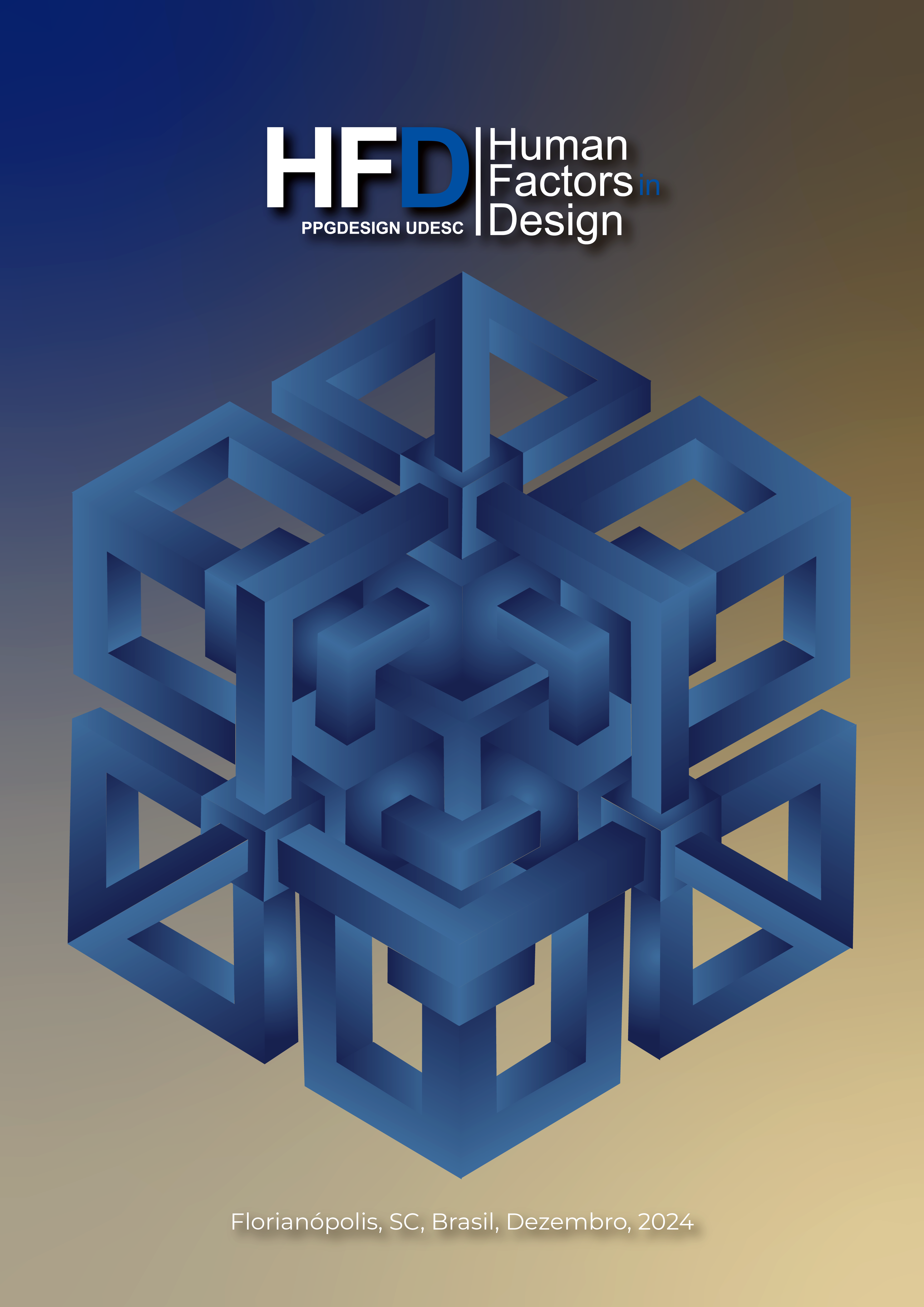Ergonomic Analysis Of The Work Of Beauticians
A Case Study on The Task of eyebrow Shaping
DOI:
https://doi.org/10.5965/2316796313262024022-036Keywords:
Análise Ergonômica do Trabalho, Esteticista, ErgonomiaAbstract
The ergonomic workspace analysis (EWA) aims to intervene in the productive environment to analyze the problems and the physical and psychophysiological consequences resulting from work. Within this context, the objective of this study was to carry out an ergonomic analysis of work in a beautician's workplace. The demand was identified based on the report of a beautician about her discomfort and pain after performing eyebrow shaping on customers. For data collection, an on-site observation of the activity was carried out with the application of a focused questionnaire, image recordings and completion of a body map, which indicates the location, duration, frequency and intensity of the musculoskeletal discomfort. In parallel, the RULA postural analysis protocol was applied, which indicated level 7 (high risk of injury). Through data analysis, postural recommendations were given, and if applied, they would decreased the RULA level to 4 (low risk of injury).
Downloads
References
AGHAHI, R.; DARABI, R.; HASHEMIPOUR, M. Neck, back, and shoulder pains and ergonomic factors among dental students: J Educ Health Promot, v. 1, n. 07, 2018. DOI: http://doi.org/10.4103/jehp.jehp_80_16
COURY, H.; MOREIRA, R.; DIAS, N. Evaluation of the effectiveness of workplace exercise in controlling neck, shoulder and low back pain: a systematic review: Revista Brasileira de Fisioterapia, v. 13, n. 06, p. 461-479, 2009.
DICKSON, A. Mulheres no trabalho. Porto Alegre: Globo, 2010.
DOMBIDAU, R. C. et al. Aplicação do método RULA (Rapid Upper Limb Assessment) em um laboratório didático. In: XXXVII Encontro Nacional de Engenharia de Produção, ENEGEP 2017, Joinville. Anais [...]. Joinville: 2017, p. 4-26.
GARCÍA-SALIRROSAS, E. F.; SÁNCHEZ-POMA, R. A. Prevalencia de los trastornos musculoesquelético en docentes universitarios que realizan teletrabajo en tiempos de covid-19. Anales de la Facultad de Medicina, v. 81, n. 03, p. 301-307, 2020. DOI: http://dx.doi.org/10.15381/anales.v81i3.18841
GEM, Global Entrepreneurship Monitor. Empreendedorismo no Brasil 2013. Curitiba: IBQP, 2013.
GIL, A. C. Como elaborar projetos de pesquisa. 5. ed. São Paulo: Atlas, 2010.
GUÉRIN, et al. Compreender o trabalho para transformá-lo: A prática da ergonomia. São Paulo: Edgard Blucher, 2007.
HENDRICK, H. et all. Handbook of Human Factors and Ergonomics Method: CRC Press, 2006.
LOZADA, Gisele; NUNES, Karina da S. Metodologia Científica. Porto Alegre: Soluções educacionais integradas, 2019.
MCATAMNEY, L.; CORLETT, E. N. RULA: a survey method for the investigation of work-related upper limb disorders. Applied Ergonomics. 1993, vol.24, n.2, p 91-99. ISSN 0003-6870. DOI: https://doi.org/10.1016/0003-6870(93)90080-S
PAINI, A. C; SILVA, E.; OLIVEIRA, F.M. Postura corporal de operador no carregamento mecanizado de madeira: estudo de caso. Enciclopédia Biosfera. v.13, p. 962-974, 2016.
SOARES, C. O. et al. Fatores de prevenção de distúrbios osteomusculares relacionados ao trabalho: revisão narrativa. Revista Brasileira de Medicina do Trabalho, v. 17, n. 03, p. 415-430, 2019. DOI: http://doi.org/10.5327/Z1679443520190360
STAUD, R. et al. Overall fibromyalgia pain is predicted by ratings of local pain and pain-related negative affect--possible role of peripheral tissues. Rheumatology (Oxford), v. 45, n. 11, p. 1409-1415, 2006. DOI: http:// 10.1093/rheumatology/kel121.
WISNER, Alain. A inteligência do trabalho: textos selecionados de ergonomia. São Paulo: Fundacentro, 1994.
Downloads
Published
How to Cite
Issue
Section
License
Copyright (c) 2024 Human Factors in Design

This work is licensed under a Creative Commons Attribution 4.0 International License.
Os artigos publicados pela revista são de uso gratuito, destinados a aplicações acadêmicas e não comerciais. Os direitos autorais são todos cedidos à revista. Os artigos cujos autores são identificados representam a expressão do ponto de vista de seus autores e não a posição oficial da revista Human Factors Design. O (s) autor (es) se compromete a sempre que publicar material referente ao artigo publicado na Revista Human Factors Design mencionar a referida publicação da seguinte forma:
Este artigo foi públicado originalmente pela Revista Human Factors Design em seu volume (colocar o volume), número (colocar o número) no ano de (colocar o ano) e pode ser acessado em: https://periodicos.udesc.br/index.php/hfd/index


